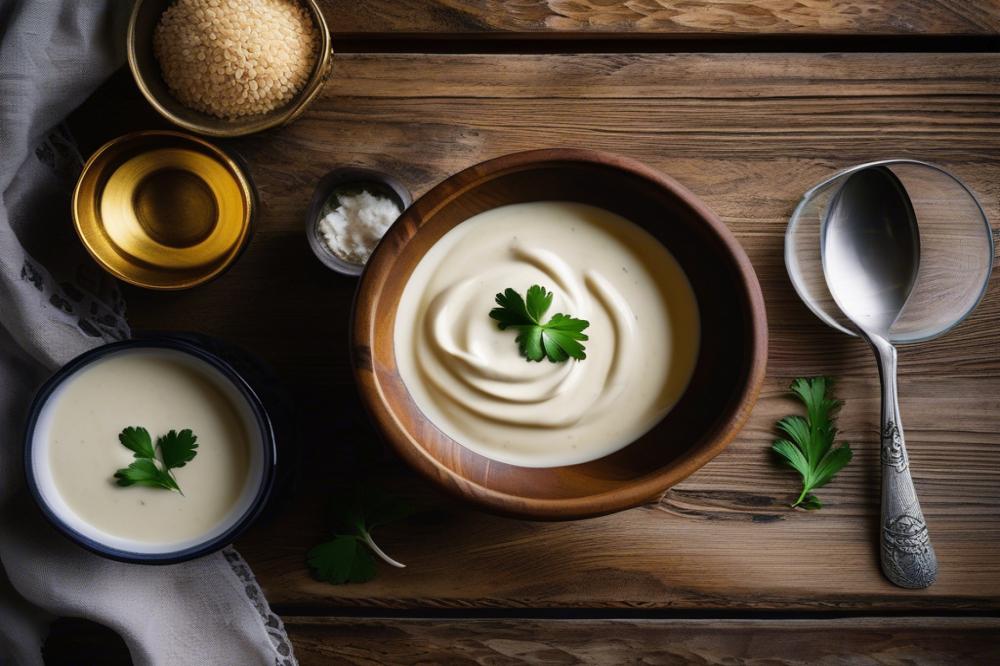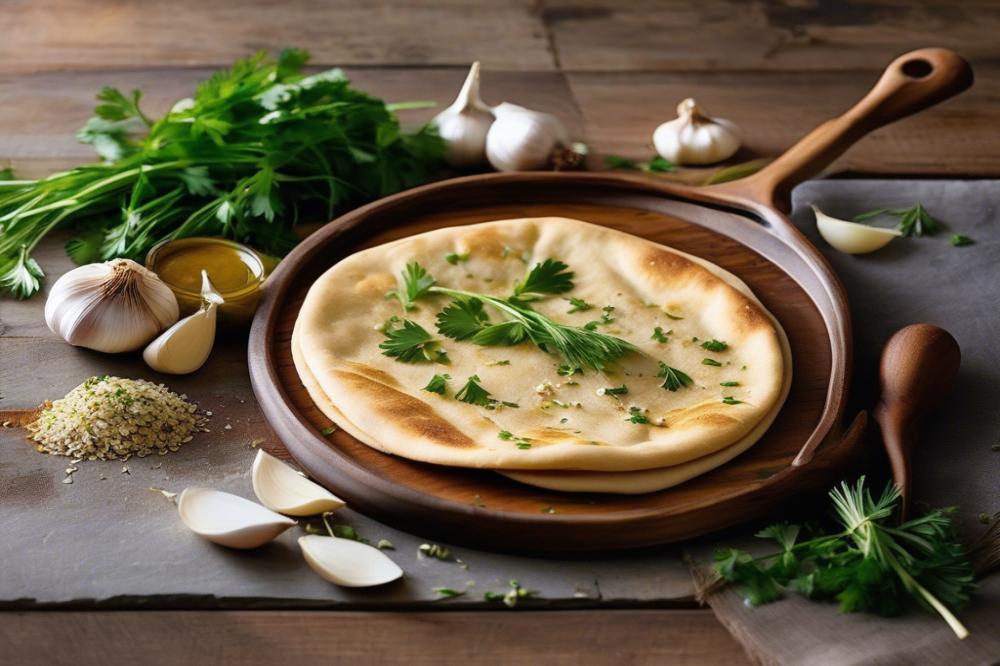Introduction
Lebanese garlic sauce, known as Toum, is a vibrant and piquant condiment that adds a punch to many dishes in Lebanese cuisine. This sauce is primarily made from fresh garlic, oil, lemon juice, and salt. Its creamy texture and bold flavor make it one of the essential elements of Middle Eastern recipes. Often, it serves as a beloved companion to grilled meats, vegetables, and shawarma.
The importance of Toum in Lebanese cuisine cannot be overstated. It complements meals not just through taste but also as a symbol of hospitality. Families take pride in serving this sauce at gatherings and celebrations. Guests often find themselves reaching for it again and again, enjoying its unique characteristics.
An interesting point of comparison exists between this garlic sauce and traditional mayonnaise. While both are creamy and rich, Toum offers a much more intense garlic flavor. For those who follow a vegan lifestyle, this sauce acts as a perfect mayonnaise alternative. It provides a delightful, flavorful option without any animal products. Its method of emulsification is quite simple yet effective, allowing for smooth, luscious results with just a few ingredients.
Many people appreciate how easy recipes featuring Toum can be. With just a few simple steps, anyone can prepare an incredible addition to their meal. This garlic sauce not only enhances dishes but also reflects the heart of Lebanese cooking traditions. Whether spread on a sandwich or served as a dip, it transforms everyday meals into memorable culinary experiences.
Lebanese Garlic Sauce Overview
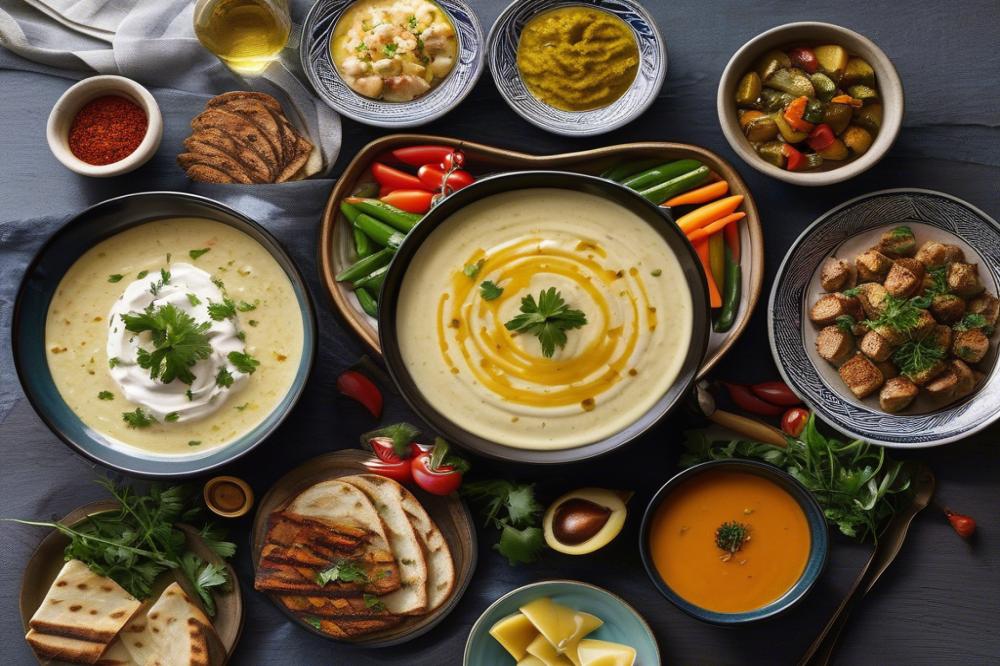
Definition and history of toum
Toum is a thick, flavorful garlic sauce often used in Lebanese cuisine. It combines garlic, oil, and lemon juice through a special cooking technique known as emulsification. Historically, this sauce has deep roots in the Levant region. Many believe it dates back centuries, evolving with each generation. This process results in a creamy texture that resembles mayonnaise, but it is entirely vegan.
Role of toum in Middle Eastern recipes
In Middle Eastern recipes, toum plays a vital role as a condiment. It complements grilled meats, particularly chicken and lamb, enhancing their flavors. Many people enjoy it as a dip alongside pita bread. Its versatility makes it a staple not only in Lebanese meals but also throughout the entire region. The sauce can elevate even the simplest dishes, making them more mouthwatering.
Culinary significance in Lebanese households
In Lebanese households, toum is more than just a condiment; it represents tradition and family. Preparing it is often a communal activity, bringing family members together in the kitchen. Recipes for this garlic sauce are passed down through generations, preserving the culture of Lebanese cooking. Regularly found at gatherings and celebrations, this sauce enriches every meal. Many households consider it essential for achieving authentic Middle Eastern flavors in their everyday cooking.
Ingredients and Method
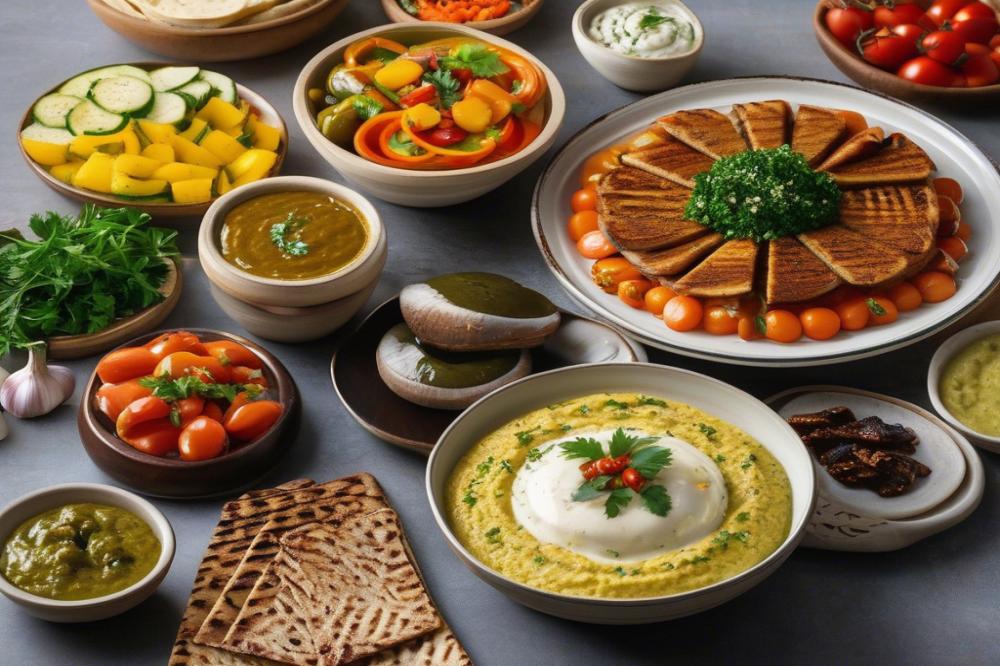
List of Ingredients with Quantities
- Fresh garlic cloves: 1 cup (approximately 10-12 cloves)
- Salt: 1 teaspoon
- Lemon juice: 1/4 cup
- Vegetable oil: 1 cup
- Water (optional): 1-2 tablespoons
Nutritional Information for Each Ingredient
Garlic is low in calories but high in nutrients, making it a healthy addition to recipes. It contains vitamins B6 and C, and is known for its health benefits. Salt, while often seen as unhealthy, is needed in small amounts for body function. Lemon juice adds vitamin C and can aid in digestion. Vegetable oil provides healthy fats, essential for a balanced diet. Water can help to thin out the sauce, making it adjustable to your preference.
Instructions for Preparation Technique
Start by peeling the garlic cloves. Using a mortar and pestle or the flat side of a knife, mash the garlic with salt. Crushing garlic helps to release its strong flavor. Next, gradually add lemon juice while blending the mixture. This step adds brightness to the sauce and balances the garlic’s pungency. Slowly emulsify the oil into the mixture, blending continuously. This cooking technique helps to create a creamy texture, much like a mayonnaise alternative. For those who prefer a thinner sauce, feel free to adjust with water as needed. A little extra liquid will create a more pourable consistency while still being flavorful.
Cooking Technique: The Emulsification Process
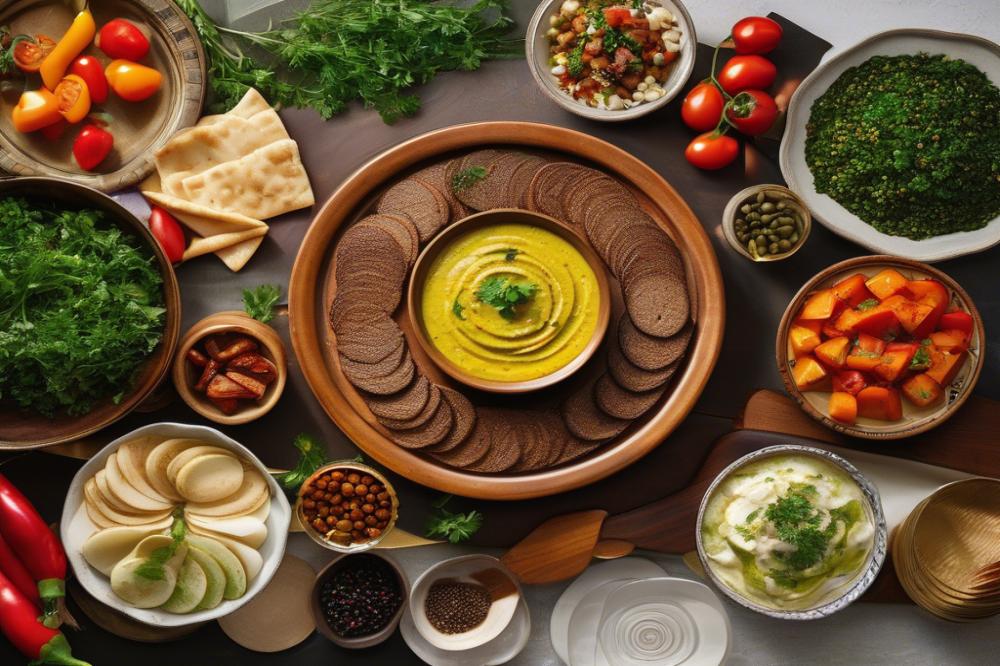
Emulsification is a cooking technique that combines two liquids that usually don’t mix. In the case of Lebanese garlic sauce, it involves mixing garlic and oil into a smooth and creamy blend. Achieving this can feel tricky, but several tips can help. Patience is key. Adding oil slowly creates a stable emulsion, a dense mixture that holds together well.
Tips for Achieving a Stable Emulsion
Start with room temperature ingredients. Cold components can lead to separation. Gradually drizzle in the oil while constantly blending. This helps the emulsion form properly. Using a food processor or a hand-held mixer can also make the job easier. These tools blend the ingredients efficiently, helping them to combine seamlessly.
Common Mistakes to Avoid During Preparation
One common mistake occurs when the oil is added too quickly. This can cause the mixture to break apart and lose its creamy texture. Consider avoiding too much garlic as well; while it’s essential, balance matters. If the sauce turns out too bitter, you might have overdone it. Stopping to scrape down the sides of the bowl or processor will also help mix everything together well. Lastly, don’t forget to taste! Adjust the seasoning to create a flavorful and satisfying dip.
Serving Suggestions and Pairings
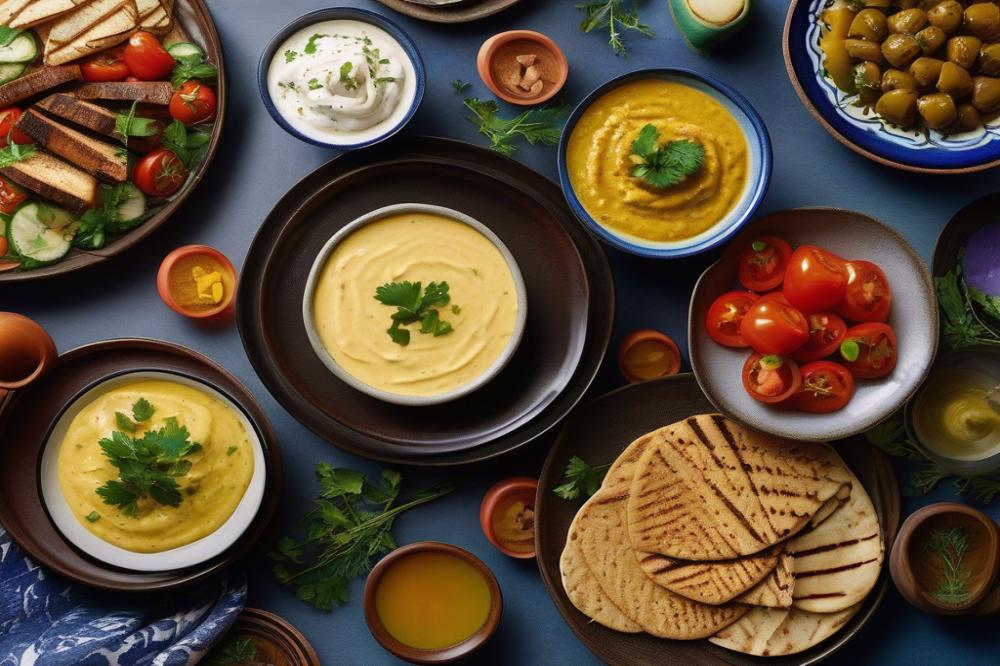
Popular dishes served with Lebanese garlic sauce
Transform your meal with this mouthwatering sauce. It pairs beautifully with grilled meats like chicken or lamb. Dipping shawarma in this sauce elevates the flavor. Some people enjoy it with falafel for a plant-based twist. It complements roasted vegetables, adding a creamy texture. Serve it alongside crispy pita chips for a fun appetizer. The sauce can also enhance hearty stews, providing a jump in flavor.
Versatile uses in various cuisines
This garlic sauce is a fantastic mayonnaise alternative in sandwiches and wraps. Spread it on bread to create a bold taste. In addition, use it as a dressing for salads, where it brings excitement to fresh greens. Vegans appreciate its rich texture without any animal products. Many Middle Eastern recipes use emulsification techniques allowing for a creamy finish. It can easily blend into sauces, adding depth to dips or marinades.
Recommendations for enhancing flavors and serving styles
Consider adding lemon juice to brighten its flavor. A touch of salt can enhance the overall taste, too. Mixing herbs like parsley or cilantro can provide freshness. If you enjoy a spicy kick, add chili peppers or paprika. Serve the sauce chilled for a refreshing contrast with warm dishes. Consider garnishing with chopped nuts for texture and crunch. Offer colorful vegetables to dip, creating a vibrant platter. This garlic dip brings a unique experience to any meal.
Variations and Customization
Regional adaptations of toum offer a rich tapestry of flavors. Each area in Lebanon may add its twist. Some might mix in herbs or a hint of lemon for brightness. Others could incorporate a touch of heat with chili peppers. These local variations bring out different aspects of the sauce, making it versatile.
Spices and herbs enhance its flavor profile. A pinch of cumin can add warmth and depth. Fresh parsley or mint introduces a refreshing note. Paprika can offer a smoky essence, inviting you to explore new dimensions. Adding these ingredients can create a personalized garlic experience, allowing cooks to reflect their own taste and the essence of Lebanese cuisine.
There are ways to adjust the flavor and heat of this sauce. For those who enjoy spiciness, incorporating cayenne or crushed red pepper elevates the kick. Decreasing the garlic intensity by using fewer cloves can make it milder for sensitive palates. Mixing in tahini can create a creamier texture, resembling a mayonnaise alternative. This is a great choice for vegan dishes, proving that anyone can relish in its deliciousness.
Incorporating different oils can also change the outcome. Olive oil brings a distinct Mediterranean flavor, while avocado oil is lighter and less pungent. Experimenting with different oils can lead to unexpected results. Balancing garlic with other ingredients during emulsification allows a cook to find their sweet spot.
Easy recipes for dips and dressings can utilize toum as a base. It complements grilled meats and fresh vegetables. The sauce serves as a perfect condiment for pita breads, enhancing every bite with flavor. Customizing the ingredients leads to a sauce that not only matches personal preferences but also fits various Middle Eastern recipes.
Final Thoughts on Mastering Toum
Understanding the importance of mastering toum goes beyond simply making a sauce. This creamy garlic blend serves as a culinary treasure in Lebanese cuisine. When you make this sauce yourself, you unlock a world of flavor. It can elevate your dishes, add depth to meals, and even impress your guests.
Feel free to experiment with the recipe. You might adjust the garlic levels based on your taste. Maybe add a touch of lemon for brightness or play with various oils. Each attempt teaches you something new about balancing flavors and textures. Cooking should be fun, and this is an easy way to enhance your skills.
Modern cooking often includes vibrant, bold flavors, and toum fits perfectly into this trend. This dish is not just a traditional recipe; it’s a statement in the kitchen. With each bite, experience the tangy richness that garlic brings. Discover how it enhances grilled meats, roasted vegetables, or even simple bread. An impressive array of possibilities awaits you using this sauce.

